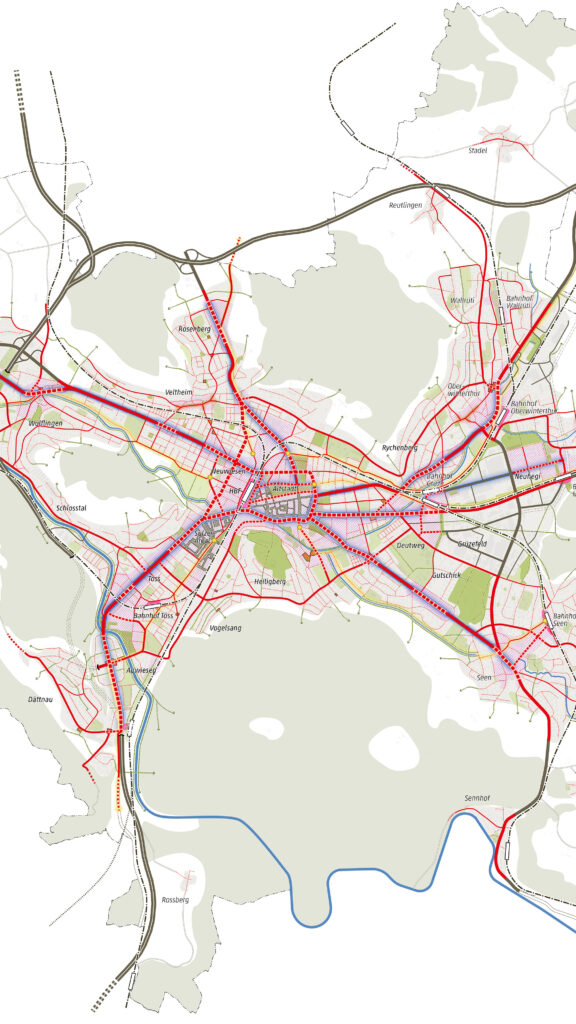
November 6, 2025
2560 Design Guidelines for Public Spaces in Winterthur
2560 Design Guidelines for Public Spaces in Winterthur
Location:
Winterthur, Switzerland
Project Type:
Design Guidelines for Public Spaces in Winterthur (GöR)
Project Period:
2022–2023
Client:
Office for Urban Development and Civil Engineering, City of Winterthur
Planning Team:
ARGE Studio Vulkan, Berchtoldkrass, Basler&Hofmann, Zimraum
Photography:
Studio Vulkan
Details:
A Framework for the Future
The City of Winterthur aims to develop a future-oriented framework plan for its urban spaces, based on the city administration’s core values and strategic guidelines. As a foundation, a typology map was created to classify all street and square spaces according to their location, function, and spatial characteristics.
In addition, criteria were defined for assessing public spaces. This evaluation is conceived as a dynamic tool that adapts flexibly to the specific conditions of each context.
Using a detailed evaluation matrix, a profile was developed for each spatial typology. These profiles are represented graphically in “spider diagrams” and illustrated through axonometric drawings that serve as so-called “target images.” The diagrams weigh key categories such as urban identity, urban climate, quality of stay, maintenance and operations, investment, usability and access, permeability and connectivity, and the interface between public and private space. The resulting profiles offer a clear, comparable, and communicable depiction of each space’s requirements and potentials.
The target images serve as design references, enabling future urban development projects to be aligned with the defined ideal profiles.
The goal is to provide a guiding framework that reflects the city’s overall position on mobility, climate adaptation, spatial design, and land use. Based on this, different urban spaces can be more precisely articulated and strengthened within their urban context in terms of their spatial, ecological, and social effectiveness. Residential streets and neighborhood connectors, for instance – due to their high prevalence and low traffic volume – are particularly suited to contribute significantly to urban ecology and local climate and can be enhanced through targeted interventions.